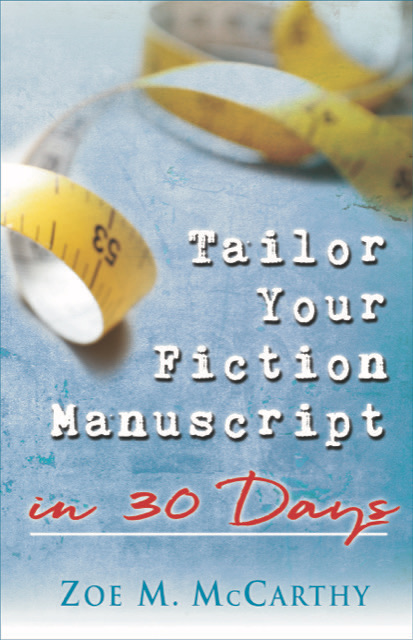
Zoe has developed a guiding resource for beginning writers. Her method is designed for brainstorming, shaping, and revising an early draft of a manuscript. General and specific tips are offered for applying rules of writing to enhance one’s story for a workable second draft. By exploring the plot line of Love Comes Softly writers may examine their own work for stronger plot and characterization. Valuable tools are offered that enable the writer to develop a workable draft in 30 days! —Yvonne Lehman, award-winning, best-selling author of 48 novels
Learn more at the end of the post.
To pull readers into your story, you’ll want to include six elements. In Part 1, we covered the first two: Intriguing Opening and Grounding the Reader. In Part 2, we addressed: Protagonist’s Ordinary World and Hint of the Protagonist’s Inner and External Goals.
Today, we’ll look at the last two more elements.
5. Hint of the Protagonist’s Greatest Fear
Your protagonist’s greatest fear usually stems from a “wound” in his childhood. The protagonist creates a shield to avoid the pain the wound inflicted.
Hint at the protagonist’s greatest fear and how he tries to avoid it. No backstory, just a hint. You need to know the wound, but don’t go into it in the first five pages. If the wound is important for the reader to know, reveal it after the first chapter. Revealing it much later may help a sagging middle. You’ll need to tease the reader into wanting to know what happened in the past.
Example 1
A doctor’s greatest fear could be that she will cause harm to a patient. By accident in her childhood, she caused another child to fall off her bike and break a leg. The other child’s parents came to her house, and in her presence, demanded her parents whip her so she’d experience the same pain their child did.
Now we might see the doctor being overcautious, double-checking her actions and notes and making sure the patient is not in undo pain. That’s the hint. Don’t overdo the hint, though.
Example 2
An abused woman’s greatest fear could be fear of being abandoned. In her childhood, her single mother often told her how worthless she was, and if she didn’t obey, her mother would leave her.
Now, we might see her pacing her bedroom. She wants to join her sister on a trip to visit her ailing grandmother, but she’s afraid her no-good boyfriend won’t like it and leave her.
6. The Inciting Incident (if possible)
The inciting incident is the event, no matter how small or big, that sets your protagonist on his story journey. If the setup of the protagonist’s ordinary world requires less than 5 pages, bring in the inciting incident. If you’re submitting your first five pages to a contest, it may help your scores to include the inciting incident.
The inciting incident could be as small as another character’s comment or as big as a spaceship landing.
Example 1
The protagonist never vacations away from home. She fears flying, seasickness, and car accidents. Then she overhears her best friend confide to another friend that the protagonist won’t join them on their trip to Europe, because she’s foolish and consumed by fears. They joke about her fears.
Her friends have hurt her feelings deeply. She decides she’ll join them on their vacation to Europe to spite them. Her friends’ conversation is the inciting incident. She leaves her ordinary world to begin a new journey (which happens to be an actual trip).
Example 2
In the protagonist’s ordinary world, she is an elementary school teacher. She loves her first graders, giving each special attention. Then on a Saturday, she sees one of her students crying and dragged down a back street by a woman who is not the mother who attended the Meet the Teacher conference. This is the inciting incident that invades her ordinary world.
She calls the family and learns their daughter is home and fine. She can’t escape the image of the child crying and resisting the woman. The child is not the happy child she once was in the classroom. The protagonist begins an investigation, which takes her on her story journey.
What is the inciting incident in the novel you’re reading?

I finished reading Tailor Your Fiction Manuscript in 30 Days. I have AND will highly recommend it to anyone who dabbles in fiction. It’s one of the best “how to” books I’ve ever read.
—Marsha Hubler, Director Montrose Christian Writers Conference
If you want to increase your chance of hearing yes instead of sorry or not a fit for our list at this time, this book is for you. If you want to develop stronger story plots with characters that are hard to put down, this book is for you. Through McCarthy’s checklists and helpful exercises and corresponding examples, you will learn how to raise the tension, hone your voice, and polish your manuscript. I need this book for my clients and the many conferees I meet at writer’s conferences around the country. Thank you, Zoe. A huge, #thumbsup, for Tailor Your Fiction Manuscript in 30 Days.
—Diana L. Flegal, literary agent, and freelance editor
Tailor Your Fiction Manuscript is a self-editing encyclopedia! Each chapter sets up the targeted technique, examples show what to look for in your manuscript, then proven actions are provided to take your writing to the next level. Whether you are a seasoned writer or a newbie, you need this book!
—Sally Shupe, freelance editor, aspiring author
Need to rework your book? Zoe M. McCarthy’s step-by-step reference guide leads you through the process, helping you fight feeling overwhelmed and wrangle your manuscript into publishable shape in 30 days. Tailor Your Manuscript delivers a clear and comprehensive action plan.
—Elizabeth Spann Craig, Twitteriffic owner, bestselling cozy mystery author of the “Myrtle Clover Mysteries,” the “Southern Quilting Mysteries,” and the “Memphis Barbeque Mysteries,” http://elizabethspanncraig.com/blog/
Zoe’s book, Tailor Your Fiction Manuscript in 30 Days, is a fresh and innovative refocusing of your novel or novella. Through a few simple—and fun—steps, Zoe helps writers take their not-ready-for-publication and/or rejected manuscripts to a spit-polish finish. Writing is hard work, yes, but it doesn’t have to be difficult.
—Eva Marie Everson, best-selling and multiple award-winning author, conference director, president of Word Weavers International, Inc.
Tailor Your Fiction Manuscript in 30 Days is chock-full of practical techniques. Numerous examples clarify problem areas and provide workable solutions. The action steps and blah busters McCarthy suggests will help you improve every sentence, every paragraph of your novel. If you follow her advice and implement her strategies, a publisher will be much more likely to issue you a contract.
—Denise K. Loock, freelance editor, lightningeditingservices.com
A concise, detailed, step by step resource for all writers.
— Jamie West, editor coordinator, Pelican Book Group
Zoe’s writing blog has always intrigued me. As a high school English teacher, I can attest that her tips on good grammar and her hints for excellent sentence and paragraph structure are spot on. But as an author, I also appreciate her ever-present advice that excellent skills are not enough: you must tell a good story, too. This book clearly shows how to do it all.
—Tanya Hanson, “Writing the Trails to Tenderness,” author of Christmas Lights, Outlaw Heart, Hearts Crossing Ranch anthology, and coming in 2019, Tainted Lady, Heart of Hope, and Angel Heart. www.tanyahanson.com
McCarthy crafted an amazing self-help book that will strengthen any writer, whether new or seasoned, with guidance and self-evaluation tools.
–Erin Unger, author of Practicing Murder, releasing in 2019





 RSS - Posts
RSS - Posts



0 Comments